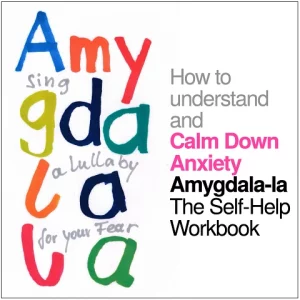Have you ever dreamed of the benefits that will come to your life as fear becomes less and less?
It is crucial to think of the things you want to attract rather than the aspects of life you want to get rid of.
If anxiety disappears, a number of aspects will change.
One of the most significant changes will be that you will no longer feel the need to avoid certain situations or activities.
You are also less likely to experience physical symptoms such as rapid heart rate and nausea.
Additionally, you will likely feel more relaxed and content in your day-to-day lives.
Finally, you may be better able to focus on and achieve your goals.
What is behind the anxiety symptoms?
While anxiety can manifest in a number of ways, the symptoms that are most commonly associated with the disorder are avoidance and physical symptoms.
People with anxiety often develop a habit of avoiding situations or activities that they perceive as threatening or dangerous.
This can lead to a number of problems, as people begin to limit their lives and miss out on important experiences.
Additionally, people with anxiety often experience physical symptoms such as a rapid heart rate, nausea, and headaches.
These symptoms can be extremely disruptive and make it difficult for people to live their lives normally.
How to turn the rules of fear on their head – use “reverse symptoms”.
Imagine trying to attract the situations you used to be afraid of.
Think about opening your life and inviting experiences to meet you.
Allow your body to come into a calm and deep breathing.
Treat your past spontaneous anxiety attacks as you would a baby lying in its crib, simply longing for love and security.
If you’re feeling anxious, there are a few things you can do to reverse your symptoms and feel better.
Here are 4 classic tips and one new one:
1. Deep breathing:
When you’re feeling anxious, your breathing tends to be shallow and rapid. This can make your anxiety worse. To reverse this, take a few deep breaths and try to slow your breathing down.
2. Progressive muscle relaxation:
This is a technique that involves tensing and relaxing different muscles in your body. It can help you to feel more relaxed and calm.
3. Visualization:
When you’re feeling anxious, visualization can be a helpful tool. Imagine yourself in a peaceful and relaxing place, and focus on the positive emotions you experience in that space.
4. Positive self-talk:
When your mind is racing with anxious thoughts, it can be helpful to counteract them with positive self-talk. Tell yourself that you’re capable and strong, and that you can handle whatever comes your way.
5. The Amaygdala-La-Technique
- The Amaygdala-La-Technique is one of the easiest ways to change anxiety patterns.
- Imagine one half of your amygdala singing a lullaby to the other half.
- Watch what happens after one day, after 5 days and after 30 days.
